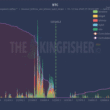Global crypto markets faced intense volatility as renewed conflict between Israel and Iran sent shockwaves across digital asset prices, resulting in over $1.1 billion in liquidations. Meanwhile, the Senate’s passage of the GENIUS Act fueled remarkable growth in stablecoins, signaling a major shift in regulatory sentiment and mainstream adoption.
Geopolitical Tensions Spark Heavy Market Turbulence
The escalation in hostilities between Israel and Iran triggered a dramatic downturn across leading cryptocurrencies. Massive sell-offs resulted in more than $1.1 billion in leveraged positions being liquidated, underscoring the heightened risk in a nervy market. Notable traders like James Wynn were among those impacted, as cascading liquidations rippled through major exchanges. Despite the turmoil, institutions and companies intensified their accumulation of digital assets, with 21 new corporate treasuries adding Bitcoin reserves in the past month.
GENIUS Act Emerges as Stablecoin Catalyst
On the legislative front, the U.S. Senate approved the GENIUS Act in a move hailed by former President Trump, who called on the House to fast-track the bill. The legislation has sparked bullish sentiment around stablecoins, causing Circle’s stock to surge and propelling the sector’s market capitalization past the $250 billion milestone. Analysts such as Bessent project the stablecoin market could reach $3.7 trillion by 2030, emphasizing both its growth trajectory and potential for reducing debt costs.
Institutional Players Double Down: New Treasury Strategies and Acquisitions
Major institutional moves continued to reshape the market landscape. GameStop expanded its debt raise to $2.25 billion with plans to further invest in Bitcoin, while DFDV announced a $5 billion equity line dedicated to Solana additions. Notably, Sharplink acquired $463 million in Ethereum even as its shares fell sharply following an equity resale announcement. Other industry giants, including Lion Group, Trident Digital, and DDC Enterprise, revealed substantial capital commitments targeting treasuries in HYPE, XRP, and BTC, respectively.
Key Stats & Figures
- Market Liquidations: Over $1.1 billion wiped out during the latest downturn, reflecting extreme volatility.
- Stablecoin Market Cap: Surpasses $250 billion, with projections up to $3.7 trillion by 2030.
- Corporate Bitcoin Adoption: 21 firms added BTC to reserves in the past 30 days alone.
- Institutional Fundraising: GameStop upsizes debt raise to $2.25 billion; DFDV and Lion Group pursue billions for crypto treasuries.
Stablecoins, Payments, and Regulatory Momentum
The GENIUS Act’s passage isn’t the only regulatory milestone in play. Ohio has ratified tax exemption for Bitcoin payments under $200, and Thailand announced a five-year capital gains tax exemption on crypto. Industry leaders, including Coinbase and CryptoCom, are expanding on-ramps; Coinbase is launching new payment tools, allowing USDC collateral usage, and moving to enable DEX and perpetual trading for U.S. customers. Meanwhile, payment innovations like USDC’s launch on the XRP ledger and Shopify integration are paving the way for broad retail adoption. At the same time, large retailers such as Amazon and Walmart are weighing stablecoin issuances, while both Tether and JP Morgan are undertaking significant investments into blockchain infrastructure and tokenised assets.
Conclusion: What This Means for the Market
The convergence of geopolitical shocks, bold legislation, and massive institutional buy-in has set the crypto markets on a volatile yet transformative trajectory. As stablecoins surge and big corporations deepen their blockchain strategies, all eyes remain on Washington—and on the next wave of macro and technology-driven developments poised to reshape the digital asset landscape.
